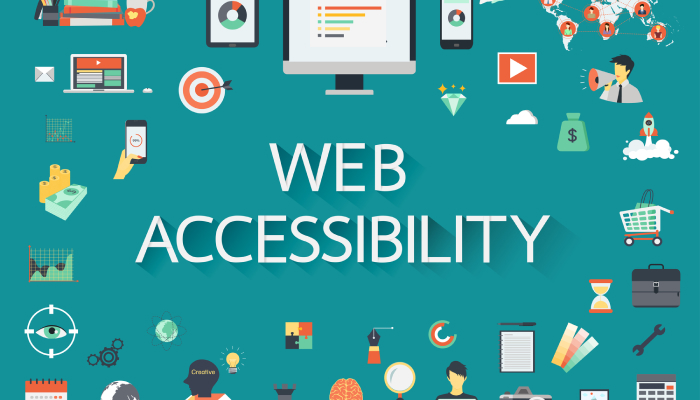In today’s digital age, the internet has become an integral part of our daily lives. From shopping and communication to research and entertainment, the online world offers many opportunities. However, not everyone can access and navigate these digital spaces with ease. Web accessibility tools play a crucial role in ensuring that the internet is a place where everyone, regardless of their abilities, can participate fully.
In this article, we will explore the significance of web accessibility tools, their impact on inclusivity, and how they benefit both users and website owners.
Understanding Web Accessibility
Web accessibility refers to the practice of designing and developing websites and web content that can be used and understood by people with diverse abilities and disabilities. This includes individuals with visual, auditory, motor, cognitive, and other impairments.
Web accessibility’s goal is removing online demand, ensuring equal access to digital information and services for everyone, and meeting current demands.
Why Web Accessibility Matters
- Inclusivity: The primary reason web accessibility is crucial is to promote inclusivity. The internet should be a space where everyone can participate equally, regardless of their abilities. When websites and web applications are designed with accessibility in mind, they become more inclusive by accommodating various disabilities.
- Legal Compliance: Many countries have introduced legislation that mandates web accessibility for public and private sector websites. Non-compliance can result in legal consequences, making organizations need to prioritize accessibility.
- Expanded Audience: By making your digital content accessible, you open up your website or application to a broader audience. This can lead to increased traffic, user engagement, and potential customers.
- Better User Experience: Accessibility improvements often lead to better user experiences for all users. Features like larger text and clear navigation benefit not only those with disabilities but also the general population.
Web Accessibility Tools
Web accessibility tools are essential aids in achieving web accessibility. These tools are designed to assist developers, designers, and content creators in identifying and resolving accessibility issues on their websites.
Here are some key web accessibility tools:
- Screen Readers: Screen readers are software programs that convert text and other digital content into speech or braille. They enable blind and visually impaired users to access and navigate websites. Popular screen readers include JAWS, NVDA, and VoiceOver.
- Keyboard Navigation: Many individuals with motor disabilities use keyboard navigation to interact with websites. Ensuring that all website features and functions are operable using a keyboard is a fundamental aspect of accessibility.
- Color Contrast Analyzers: These tools help designers check the color contrast of text and background elements to ensure readability for users with low vision or color blindness.
- Accessibility Validators: Web accessibility validators, such as WAVE and Axe, scan websites for compliance with accessibility standards, such as the Web Content Accessibility Guidelines (WCAG). They provide reports and recommendations for improving accessibility.
- Captioning and Subtitling Tools: To make video and audio content accessible, captioning and subtitling tools, like CaptionSync and YouTube’s automatic captioning, help add text descriptions for audio information.
- Alternative Text Generators: Alt text is essential for describing images and graphics to visually impaired users. Tools like the Accessible Image Sample Generator assist in creating meaningful alt text.
- Browser Extensions: Various browser extensions, such as Colorblindly and NoCoffee, simulate different disabilities to help developers and designers test their websites for accessibility.
- Readability Tools: Tools like Readable.io help content creators analyze and enhance the readability of text, which benefits users with cognitive disabilities or those learning a new language.
Benefits of Using Web Accessibility Tools
- Improved User Experience: Web accessibility tools help identify and address issues that can hinder user experience. This results in a more enjoyable and effective interaction with digital content.
- Legal Compliance: Utilizing accessibility tools ensures that your website complies with accessibility regulations, reducing the risk of legal challenges.
- Expanded Audience: A more accessible website welcomes a broader range of users, potentially increasing your website’s reach and engagement.
- Enhanced Reputation: Prioritizing web accessibility can improve your organization’s reputation by demonstrating a commitment to inclusivity and social responsibility.
- SEO Benefits: Many accessibility improvements also contribute to better search engine optimization (SEO), increasing your website’s visibility and traffic.
- Innovation and Creativity: Accessibility challenges can spark innovation and creativity in web design and development. Finding solutions for accessibility issues often results in more user-friendly designs.
Challenges in Implementing Web Accessibility
While web accessibility tools play a pivotal role in enhancing the inclusivity of digital content, there are challenges in their implementation:
- Awareness: Many website owners and developers are unaware of the importance of web accessibility and the tools available to help them.
- Complexity: Web accessibility can be complex, and the tools can be challenging to use effectively. This can deter some from addressing accessibility issues.
- Cost: Implementing accessibility features and tools can come with a financial cost, which may be a barrier for smaller organizations.
- Resistance to Change: Resistance to adopting accessibility practices can be a challenge in some organizations, especially when it involves changes to established workflows and practices.
- Constant Updates: Web content continually evolves, and maintaining accessibility can be an ongoing task as new tools and guidelines are introduced.
FAQs for Web Accessibility Tools:
Conclusion
Web accessibility tools are indispensable in making the digital world more inclusive. They empower website owners, designers, and developers to identify and rectify accessibility issues. Ensuring that everyone can access and enjoy online content. By recognizing the significance of web accessibility and its benefits, we can work together to create a more accessible and inclusive online environment.
Whether it’s through the use of screen readers, keyboard navigation, or accessibility validators, these tools have the power to transform the internet into a place where everyone can participate fully, regardless of their abilities.

